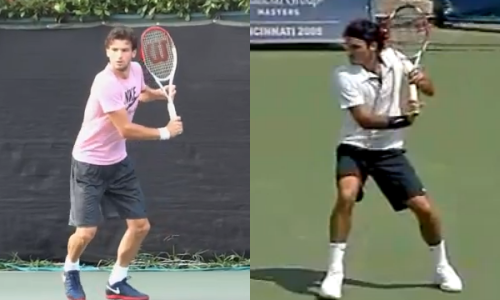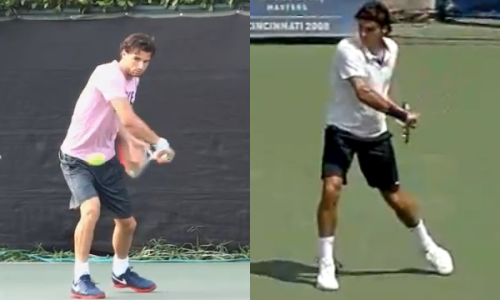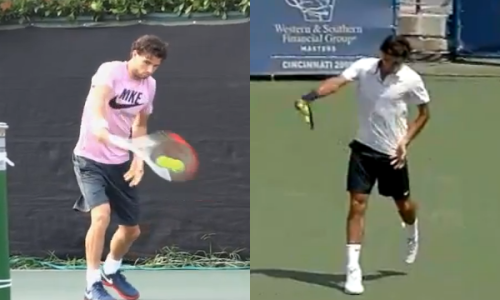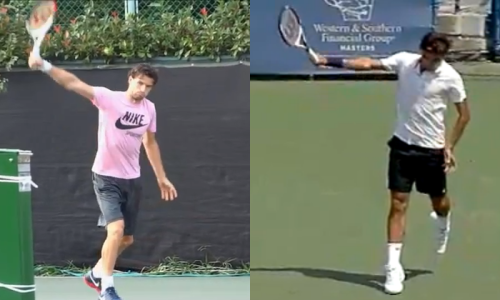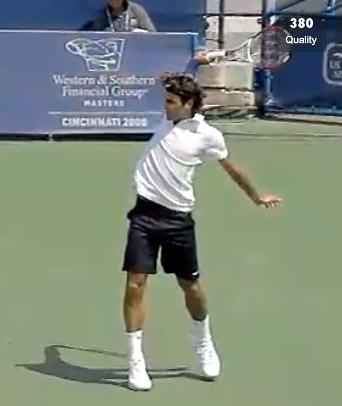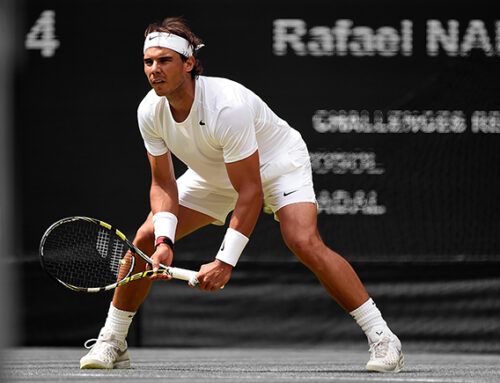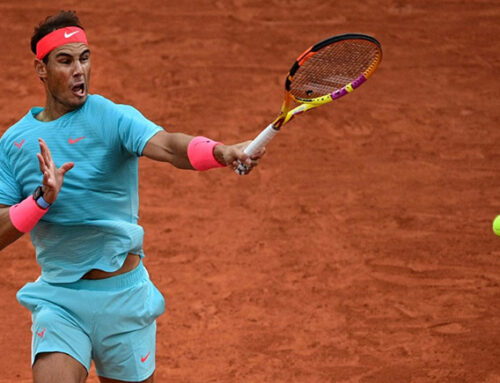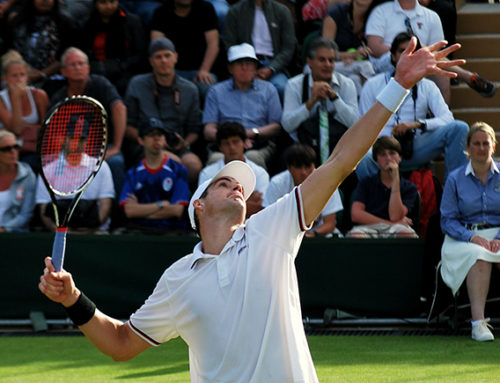In Part 1 we took a look at Dimitrov (aka “Baby Fed”)’s forehand and saw just how closely it mirrored that of the Swiss great. We concluded at the end of that article that the similarities went beyond chance and clearly into the realm of intentional imitation. In today’s article we’ll be giving their one-handed topspin backhands the same treatment. Is there the same level of duplication taking place there? Read on to find out!
Initial Turn and Racket Preparation
The angles are slightly different in today’s comparison – while Dimitrov is something of a rising star in tennis there is still limited footage available of him as a whole. However the angles are close enough for our purposes, and we can see in this first image the similarities in their initial turn and racket preparation. Both have the moderate arm bend, forearm parallel to the ground. The wrist is cocked up, racket essentially perpendicular to the ground, although in both cases it is tilted slightly towards their body.
The Racket Drop
Although Dimitrov’s posture in this shot leaves a little something to be desired, it is atypical for him and something we can put aside for now. The important things to note are the positions of the arm and the racket. In our previous backhand comparison involving Federer (with Gasquet, Almagro and Wawrinka) we noted how Federer’s arm remained bent longer into the shot than any of the other three. Dimitrov follows suite here, and we can clearly see the slight bend at the elbow for Dimitrov in this frame. It was marked down as a negative aspect of Federer’s backhand in the previous article and the same is true for Dimitrov. Setting that aside, we can see both have their racket faces perpendicular to the ground, with the racket head bent around behind the body.
Contact
When looking at this image we have to take into account the slightly different contact heights. This is a function of the incoming ball, not the stroke mechanics itself. Federer’s contact in this shot is slightly higher. That said, we can see both players with a straight arm at contact. The shoulders are slightly opened in both cases, but to a limited degree. The contact point for both is well in front of the body, and the wrist is in a strong position allowing the racket face to be essentially vertical. Notice too the position of the left hand here for both players – tucked on the inside of the left hip with the fingers open it is eerily similar in every regard.
Follow-Through
Again the similarities quickly leap out at us. The arm remains straight, and has rotated across the body pulling the shoulders open with it. Federer has kept his head down in his trademark fixation on the contact point, but Dimitrov has raised his slightly to track the ball. In this instance we can see Federer’s racket face is slightly more closed – he has pronated the forearm slightly at the shoulder in comparison to Dimitrov. I don’t find this to be a particularly meaningful detail – it is likely a result of either the slightly higher contact point or a different intent with the shot (to hit with slightly more topspin than Dimitrov in this instance). We can’t draw anything conclusive from it without more context from with to draw.
Conclusion
Again the similarities between the two are startling. In this case however there is less freedom of movement to allow for more variation in the various aspects of the one-handed backhand. Although the Dimitrov backhand might be a result of imitation, it also might not. Both follow a very classic pattern for a modern one-hander, and the similarities to other great one-handers are many (again reference the previous article on one-handers here). Regardless of whether there is intent there, what cannot be denied is that were we to look purely at the mechanics of the stroke we would be hard put to tell them apart. Which brings us to the only true distinguishing difference – the end of the follow-through. It is a somewhat talked-about point that Dimitrov’s follow-through borders on extreme – he opens the chest up to an impressive degree, his right arm rotating open well past the point we typically see with a one-hander.
This ‘extreme’ follow through is really nothing significant. It doesn’t seem to hamper his recovery at all, and may simply be a result of an extremely flexible shoulder/chest in this instance. Other players hit similarly open positions sometimes, and to conclude today’s article I will leave you with this simple image that says all that needs to be said:
